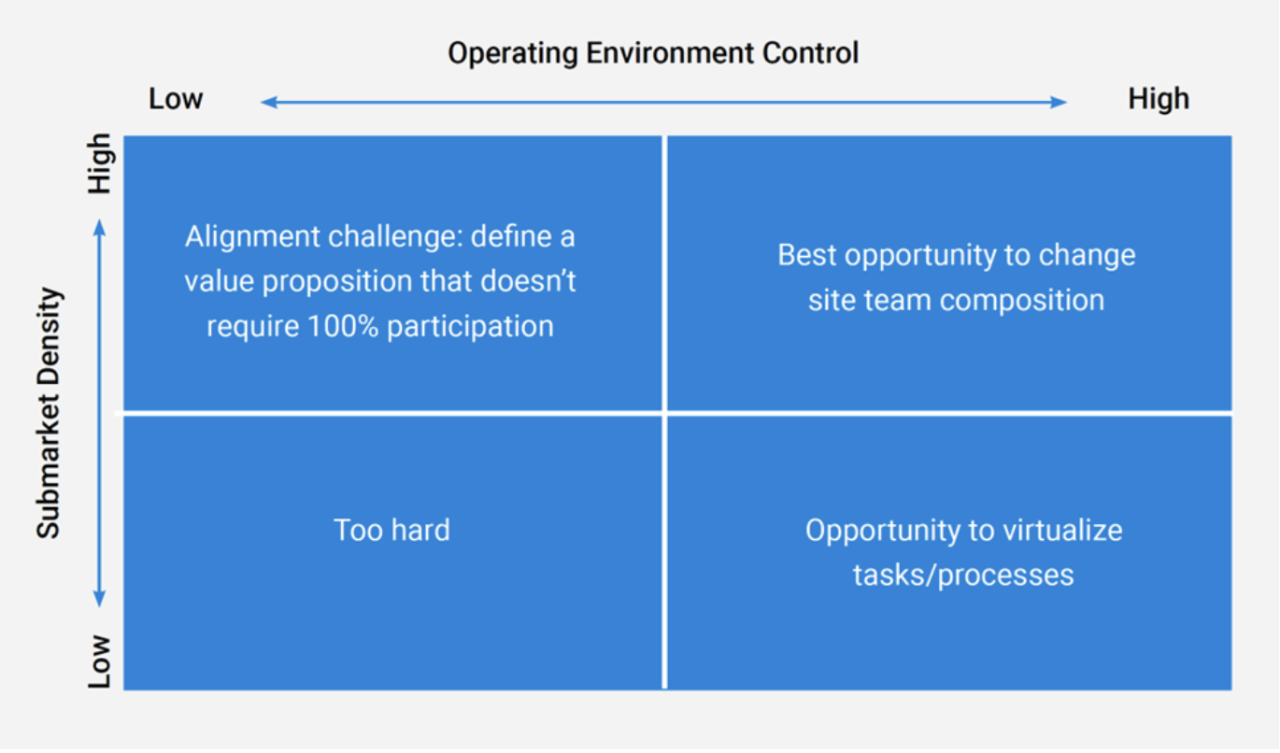Multifamily Blogs
Centralization: Why One Size Doesn’t Fit All
Centralization: Why One Size Doesn’t Fit All
The last post described the coverage model that has always prevailed in multifamily property operations. We talked about how that model is suboptimal when applied to a key function like leasing. We illustrated how a confluence of different factors leads multifamily operators to think differently about how to staff properties. Current staffing shortages have caused more operators to move from the thought of adopting a centralizing leasing to implementation of a centralized solution.
We define centralization as the craft of leveraging technology and shared resources to operate apartment communities more efficiently while improving customer experience. Centralization entails shared resources and different deployments of the technology, so we can't think about centralization without understanding the makeup of the company considering it.
One size does not fit all
In the most recent edition of the 20 for 20 White Paper, released in February of 2022, there is extensive coverage of how companies currently approach the centralization of functions. The research is based on 20 interviews with multifamily operations and technology leaders. It found that although many factors weigh on operational design in multifamily, there are two that go further than any of those to dictate the feasibility of centralization.
The two most important factors to consider are how a company controls its operating environment and the density of its portfolio in the submarkets where it operates. These two factors, included in the matrix diagram, are particularly important because they predict how companies can approach the centralization of functions.

Two different owners do not necessarily want to share staff, even if they work for the same company, because all parties usually sign off on a proforma that assigns team members to properties. Therefore, the more financial stakeholders involved in running a property, the harder it becomes to make decisions about pooling resources between properties within that same portfolio.
Submarket density
The other very pragmatic consideration in the matrix is the geographical proximity of the properties in the portfolio. If properties are close together, it is more attractive to centralize functions. Proximity makes it easier to share staff between properties. Instead of having one leasing agent per property, a smaller pool of leasing agents could cover multiple properties.
That means that you have to think about the logistics of getting leasing agents from one property to another. There's no point in centralizing that role if all you're doing is trading downtime in the property for downtime in the car, getting from one property to the other.
Another important consideration with geographical proximity is that it's fundamentally more appealing to aggregate or pool resources in submarkets where you have many units to sell. Establishing an effective sales team involves training leasing professionals to sell in particular submarkets. It's far more advantageous to do this in a market where the owners have many properties than in a market where they have very few.
Property Type: The Devil in The Detail
The two factors above explain most of the variability between different companies' attitudes towards centralization. But there are many factors besides proximity and operational control that impact the ability to centralize.
As we know, in multifamily, you seldom find two similar properties. The factors to consider in defining an approach to centralization are what the properties are like, including whether the portfolio has assets with complex access controls, such as elevator fobs, restricted access to guest parking and multiple fobbed areas. Consider whether the properties have full-time concierge, compromised or generally inadequate Wi-Fi or cell phone reception.
The considerations set out above are not intended to undermine the fundamental attractiveness of centralization. As discussed in the previous blog, centralization solves many staffing issues while the property operating model improves, along with profitability and customer experience.
The task of centralization requires careful consideration before devising a plan, as discussed in this post. The next stage in the plan is to think about the technologies that will enable centralization and the strategy an owner selects, which will be the topic of the next post in this series.


